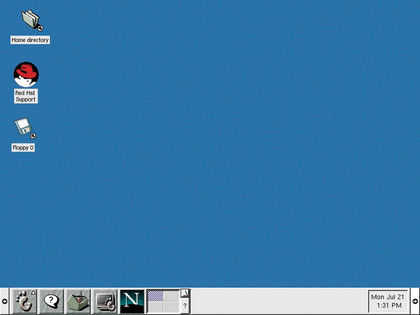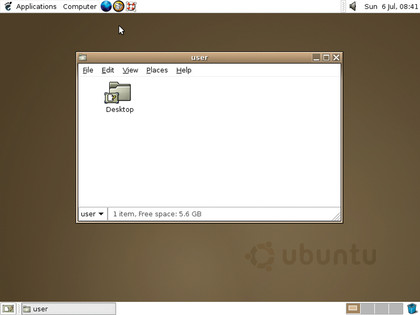The history of Linux: how time has shaped the penguin
A nostalgic look back at Linux, its distros and its colourful history

Of course, the most notable happening during these five years was the birth of KDE and Gnome. KDE (Kool Desktop Environment) was founded in 1996 by Matthias Ettrich, a student at the University of Tübingen, who proposed not just a set of working applications, but also an entire desktop environment for them to work in. No longer did users have to fiddle around in CDE or X11-based environments, now we had Qt!
By 1998, KDE version 1.0 was open to the world, and the first distro to use it was Mandrake. By 2000, version 2.0 was out and featured a greatly improved system, with Konqueror, KOffice and KIO networking.
Miguel de Icaza and Federico Mena announced the development of a new desktop environment and accompanying applications, based on GTK+. This new desktop environment was called Gnome.
Interestingly, according to internet folklore, the first Linux OS to feature Gnome was Red Hat. Gnome fast became an acceptable desktop environment, being quick, malleable and very friendly for the average user, and by May 2000 Gnome 1.2 Bongo was released.
Oracle and Sun announced official support for Linux versions, as the OS became increasingly popular, and more system admins started to adopt it in their server rooms.
2000 to 2005
The birth of live distros

The next five years saw an incredible surge of Linux-powered computers hitting the media, with further improvements to the kernel, heaps of new applications and the appearance of the first live distro.
Get daily insight, inspiration and deals in your inbox
Sign up for breaking news, reviews, opinion, top tech deals, and more.
Knoppix, a friendly Debian-based distro developed by Klaus Knopper, was also one of the most popular of its time. It was noteworthy for many reasons, but the main one was the fact that it could boot directly from the CD!
True, this is something we take for granted these days, but Knoppix 1.4, as released on 30 September, 2000, could be inserted into any PC and booted into a fully-working Linux, with access to a massive range of hardware and the ability to communicate and connect automatically to almost any network available at that time.
Knoppix set the bar for other Linux distros to follow, and from its humble beginnings it spawned quite the family tree of Knoppix-based distros, many of which are still with us today.
With all these pre-built distros now becoming the flavour of the month, and starting to look vaguely like Microsoft's offerings, a project was started to help get Linux users back in touch with what makes Linux work.
Linux From Scratch (LFS) was conceived, along with a book by Gerard Beekmans, which gave users instructions on how to build their own Linux system from source.
Linux is freedom, and it must be allowed to grow, but to ensure the protection and the advancement of Linux a group must be formed to help keep Linux independent. So, in 2000 the Linux Foundation was formed to sponsor the work of Linus and the developing community, in making and improving Linux, but also to defend it and keep it within the core values of freedom, collaboration and education - a bit like the Justice League, but without capes.
A pivotal moment in the Linux kernel came with version 2.4, released on 4 January. Version 2.4 contained support for USB, PC Cards, ISA Plug and Play, and went on to add Bluetooth, RAID and EXT3. In fact, 2.4.x was the longest-supported kernel, ending with 2.4.37.11 in 2011, and went to show just how versatile and powerful the Linux kernel had become from the early days of 1.0.
Red Hat, having now enjoyed some time on the stock market, decided that although it made some money via the support of its free Red Hat Linux OS, the time had come to adopt a more business-like and commercial approach.